How SwagUp Used a Company-Wide Hackathon to Build Culture and Engagement

In this article
In startup environments, there are always a million things going on, so it would have been easy to keep kicking the Hackathon down the road — but we felt it was important to dedicate the time to make the Hackathon happen finally. Once we decided to move forward with the event, we moved quickly but needed to be deliberate to ensure its’ success.
When we decided to kick off our first-ever Hackathon at SwagUp earlier this year, we had three goals in mind:
1. Ignite a fire in our teams to focus on rapidly solving a customer problem
2. Make progress on a critical roadmap item
3. Have fun by bringing people from across the organization together to create connections and experiences that bring us closer together
Here are the seven things we implemented to make an impact on our Hackathon, “Hack To the Moon”. These things moved the needle for our product, which was dubbed "the most impactful cultural initiative ever done at SwagUp"...Yes, that's a direct quote from one of our SwagUp employees.
1. Create Cross-Functional Teams
A classic problem in (bad) company cultures is that the product and engineering organizations often become disconnected from the rest of the organization. You may have heard of the disgruntled engineers criticizing the lazy, overpaid salespeople or the sales rep who feels the tech team is out of touch with the customers' needs. Sometimes these things are true, but these assumptions build with a lack of understanding and empathy for what other teams do.
One of our values at SwagUp is "there's potential in everyone." Whether you pack boxes in the warehouse or are the CFO, everyone has unique insights, experience, and value to bring to the table. And the more we can bridge the gap between disparate groups, the better the outcomes will be. This is what we mean by having a diversity of thought.
We felt it was essential that we had representation from across the org to participate in building balanced teams with members who bring different perspectives. You might be asking, "well, how can someone in HR participate in a Hackathon?" - in many ways! All people are consumers and users; representatives of the HR team could bring user feedback to the table, do research, project manage, or even flex a skillset they don't get to use daily.
Our Swagstronauts got to work alongside people they've never even had the opportunity to speak with. They broke down their assumptions, gained mutual respect and appreciation for each other, and all teams delivered better outcomes.
Hackathons aren't just for engineers!
2. Block Time Off For The Team To Focus On The Hackathon
There are always a million different things in fast-growing startups, so it can be hard to block off time for initiatives like a hackathon. But you must make the time and allow the team to unplug from their day-to-day so they can focus on the task.
We decided to start the Hackathon on Thursday afternoon, with submissions due by the end of the day Saturday. Teams had leeway to step away from their day-to-day for these few days. Of course, it's impossible to 100% step away but at least the team felt they had our support to prioritize the work with their hackathon team.
3. Create Top-Quality Hackathon Swag

Ok, I hear the swag company telling you to make a swag for the Hackathon…
But honestly, it's a massive part of it!
We had our design team create a fun logo and theme for the Hackathon, which we used to produce one of our sporty tri-blend t-shirts, stickers, and a fun "Hacker" hat. We set up a redeem page ahead of time so that our team could fill in their info and we could quickly ship to all 60+ participants.
The hackathon swag became the uniform all week long; from the kickoff call on Thursday morning to the demo day the following Monday, hacker hats and the "hack to the moon" took over our Zoom rooms. The swag memorialized the event and brought everyone together and is still among our team's favorite swag we've ever done. Naturally, those who didn't participate were jealous, but that's their loss :)
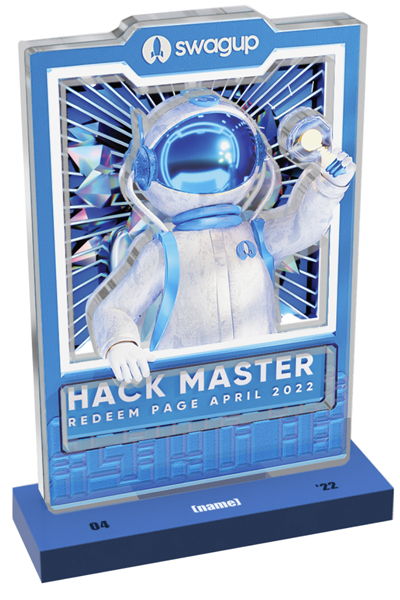
4. Develop Judging Criteria That Rewards Cultural & Tactical Execution
While we were hoping the Hackathon would lead to actual product breakthroughs that we could bring to customers quickly, we were careful not to judge 100% on the end product. As mentioned, we had three key goals, one of which was about bringing teams together.
As such, in the judging criteria shared at the start, we made it clear that things like team collaboration would also be a key factor. Throughout the Hackathon, mentors and judges would jump into different team's Zoom meetings, observing how they were working, getting a feel for the dynamic, and asking questions. Seeing each team come up with names and logos for themselves was fun.
We also threw in a few surprise cultural challenges throughout the Hackathon which unlocked points and prizes for teams, such as an extra 12 hours to work on their solution. These included a Tik Tok challenge, where teams made their own intro videos that had our team ROFL!!!

Regarding the demo presentations, the most points were awarded for the actual solution, but consideration was also given to how the team presented in a collaborative fashion.
Check out some memes we had the teams make to gain some cultural points!
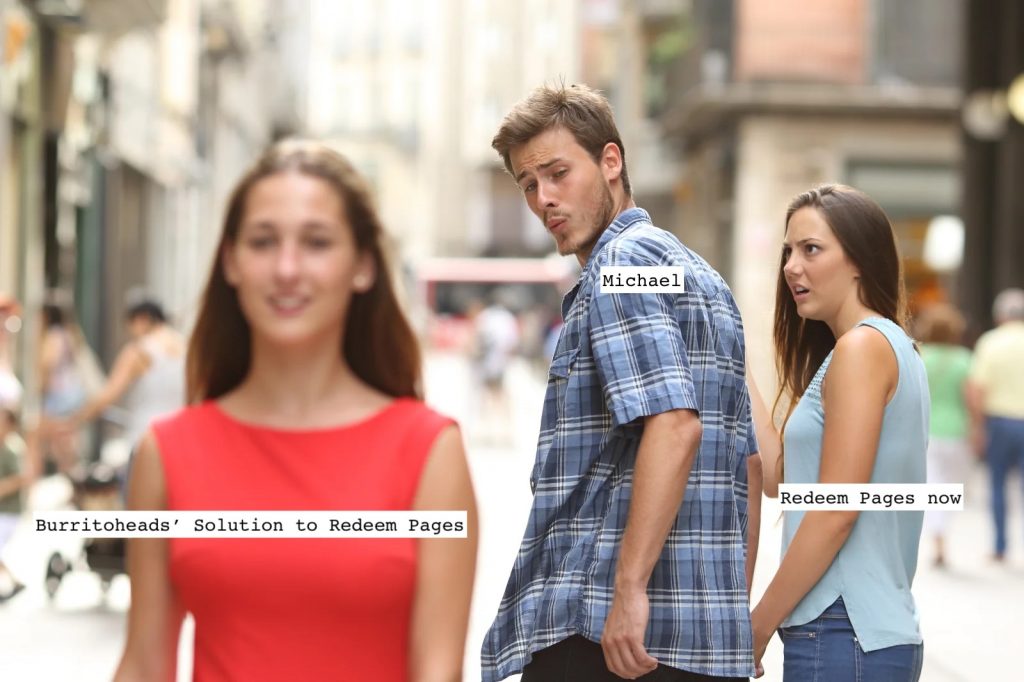
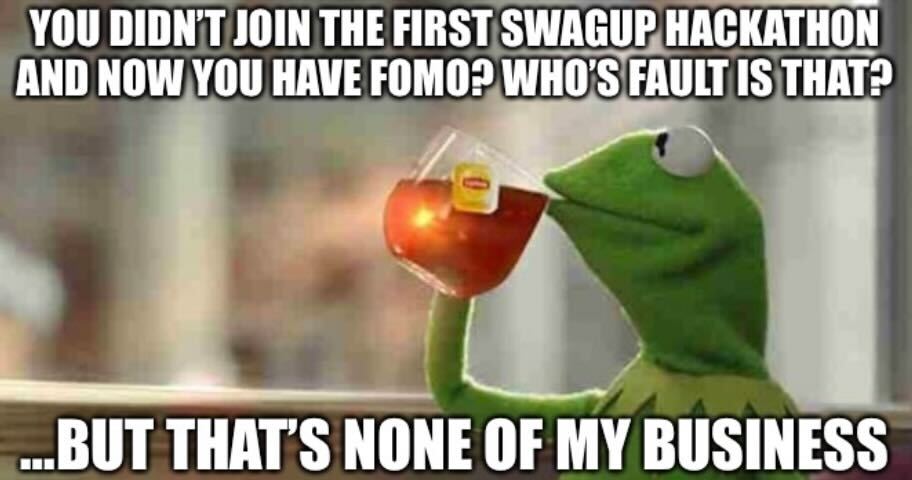
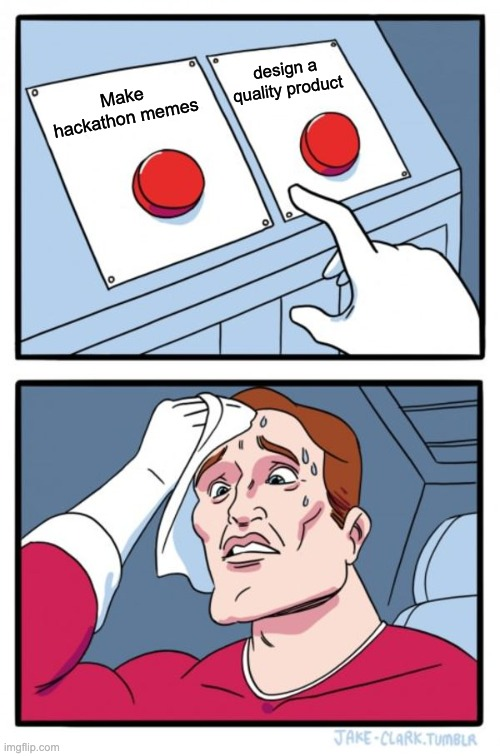
5. Designate Mentors That Help Each Team
While the judges were selected from some of the top executives in the company, there was another set of leaders at the company that wanted to get involved but couldn't dedicate the time to be full participants. For these individuals, we made them mentors.
The inspiration here was from the new Gordon Ramsey show, "Next Level Chef." If you haven't seen it before (you should), but they do a great job of leveraging top chefs to mentor the competing chefs throughout the competition. They get in the kitchen with them, taste the food, keep them motivated, help them think through challenges. We modeled our mentors after them.
This gave upcoming leaders in our org the opportunity to play a larger coaching role in the Hackathon, getting to know more people throughout the org, sharing their insights, and keeping teams focused on the things that mattered.
Both team members and our mentors found it incredibly helpful and rewarding. It also made teams feel less like they were out on an island all day long and that there was this sense of connection to the broader org.
6. Bring The Company Together For Demo Day
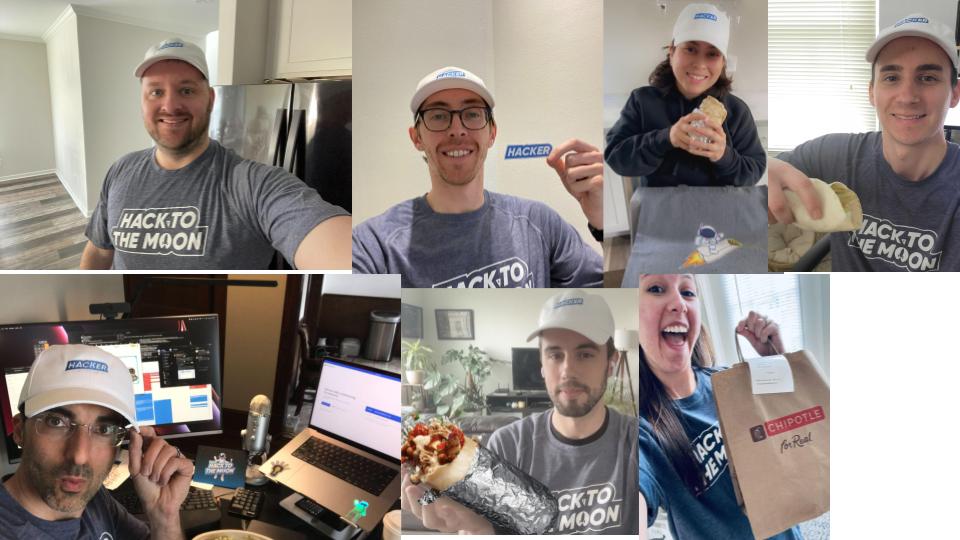
Demo day is what it's all about! After grinding it out for 3 straight days, teams finally get to share the fruits of their labor. We made sure to block off 2 hours on a Monday morning so that everyone from around the company could participate.
Each team, which introduced themselves with their own name and logo, had up to 12 minutes to share their experience and solution, walking us through how they arrived at it, the problem they were solving, and showing live demos, if they had one.
Members of the broader SwagUp team, including judges, watched and asked questions. You could sense how proud each team was to present their work and how engaged in the experience all involved were (the Zoom comments were popping off every few seconds). This was truly one of the most fun experiences in SwagUp's 5 year history.
One of the best things to come from the demos was the general excitement across the company around building things and solving problems for customers quickly, and just how much could be accomplished in only 3 days – we were all shocked by what some of the teams were able to achieve!
By the end, winners were announced, each member of the winning team was given a cash prize, a limited edition SwagUp trophy, and enlisted to help bring the solution to life for our customers!
7. Follow Through!
The Hackathon doesn't stop when you announce winners. You must follow through and leverage the work from the Hackathon to bring a product to market and value to customers, otherwise the excitement will quickly fade and rallying the troops for the next one will be hard.
By the next week we began kicking off sessions to understand the winning team's solution better, understand how far away from implementation it was, and started to break down the work. We enlisted members of the winning team to help lead the project and take it to completion.
We also made sure to look back at the other solutions that were presented by other teams to see what we could leverage from them as well. While they didn't win, all team's approached the problem in a creative way from which we could draw inspiration. The more the team's DNA was on the solution, the better.
Summary
To wrap it up, hackathons are incredibly valuable tools to unlock innovation and progress in your company. But if done well, they can also bring your teams together and help you build a winning culture. Our Hackathon was a galvanizing moment for our team that brought everyone closer together, broadened horizons, and pushed the business forward. So go out and get your first Hackathon going — it's worth it! And let me know how it goes. :)
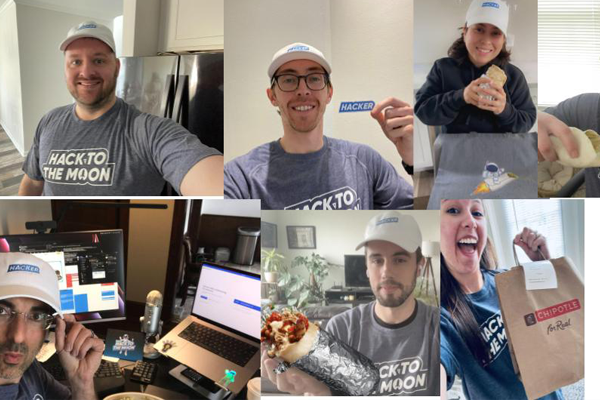

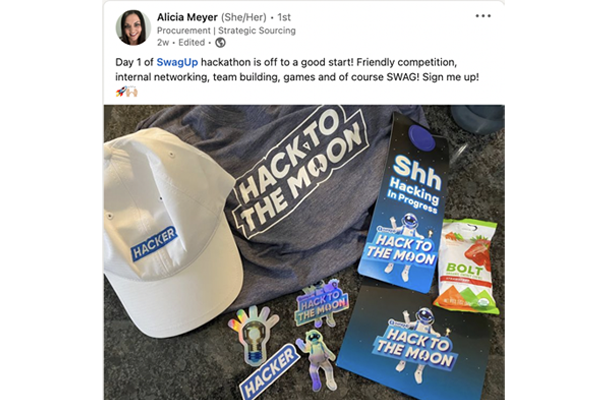

We are excited to share with you our Redeem Pages that were created by our SwagUp Hackathon Team!


.png)
.jpeg)


